Sharing is caring!
Poetry is hard. It is. There’s no doubt about it. But that’s because we focus on always looking for that hidden meaning. What’s it really all about?!
But what if… and stick with me for a moment… We sometimes read poetry just for enjoyment or just to look at it for its word play? What if we just sought to enjoy the construction and creation of a poem? To enjoy how it makes us feel and think? Doing this rather than always trying to figure out what the poet felt and thought and meant? Like what does it mean when they said “Tyger, Tyger / burning bright”?” (Apologies here to William Blake!)
Adam Sol, Canadian-American poet and author of How a Poem Moves, expressed similar sentiments in a 2019 interview:
One of the things I say to my students when I’m teaching poetry is that they shouldn’t get all tensed up trying to read poems because they are worried about what a poem means.
Adam Sol, Canadian-American Poet
(You can listen to the full interview.)
And that’s what the three ideas in this post will hopefully do – have students read and experience poetry as they create ones that ‘move’ them.
Idea 1: Book Spine Poetry
If you have a classroom or school library and you are willing to let students scour through the books to find some great titles (or perhaps you can have a selection at the ready) then book spine poetry is another writing-free poetry writing option.
The library in my city loves to post book spine poetry. Here are a couple from when our beloved basketball team was in the hunt for a championship in 2019! (GO RAPTORS!)
Toronto Public Library Twitter 2019
You’ll notice in the second photo above includes some blurred words so the poem makes the most sense. This adaptation of the full title is a great idea for students too.
Have students gather books to ‘write’ their poem. If some of the words don’t work, have them take a photo of their stack and edit it in their phone or even within Canva or Google Slides.
This can take a bit of the pressure off in the creation process; students won’t have to find the perfect book to fit for each line of their poem.
Idea 2: Found Poetry with Other Poems
Do you have specific poets you must cover as part of your curriculum? Do you perhaps have a few favorite poets or poems you like? If so, make a copy and share these poems with your students. From there provide them scissors and let them cut up those poems to pull out words and phrases they like.
If you’re stumped for poems, check out this free e-book! It suggests 5 poems for every month of the year and includes direct links to each poem. Voila 5 poems you can use with your students for this very activity. You can download your copy today! Or check out Poetry Foundation or the Academy of American Poets with their databases of searchable poetry. Students can focus on a topic and search for their own poems too if time and technology access allows.
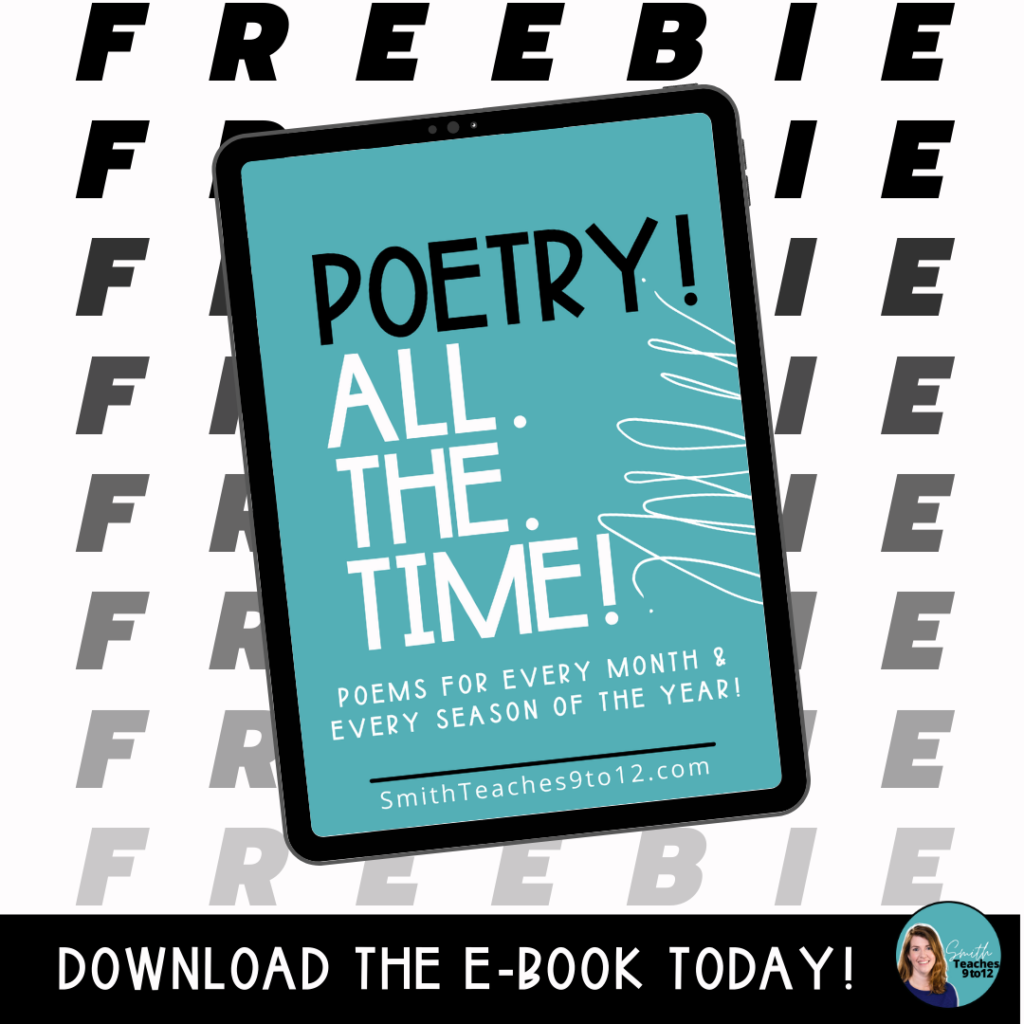
With this idea, students read a variety of poems but still have the opportunity to create their own without having to “write” a word on their own!
Why not go the next step and have them create a free verse poem?
In case you’re not familiar, free verse poetry is unbound by prescribed structure. It doesn’t have to have a set rhyme scheme or meter in a line. Instead it tries to mimic speech or a conversational tone.
If free verse seems too daunting, have students start by picking out words and short phrases they like from the poems provided. Then they can put those elements together; invariably this leads them to free verse without them being told to “write a free verse poem”!
Idea 3: Blackout Poetry
And the classic that requires a marker so it has some writing but really it’s scribbling rather than writing… so hopefully you’ll accept this exception!
There are so many ways to use this particular form. Austin Kleon, an originator of Blackout Poetry, often used newspaper articles. What a way to introduce some current events into your ELA classroom and mash that up with poetry. You can read about blackout poetry to practice summary skills on ELA Matters, a collaborative blog where I’m a contributor.
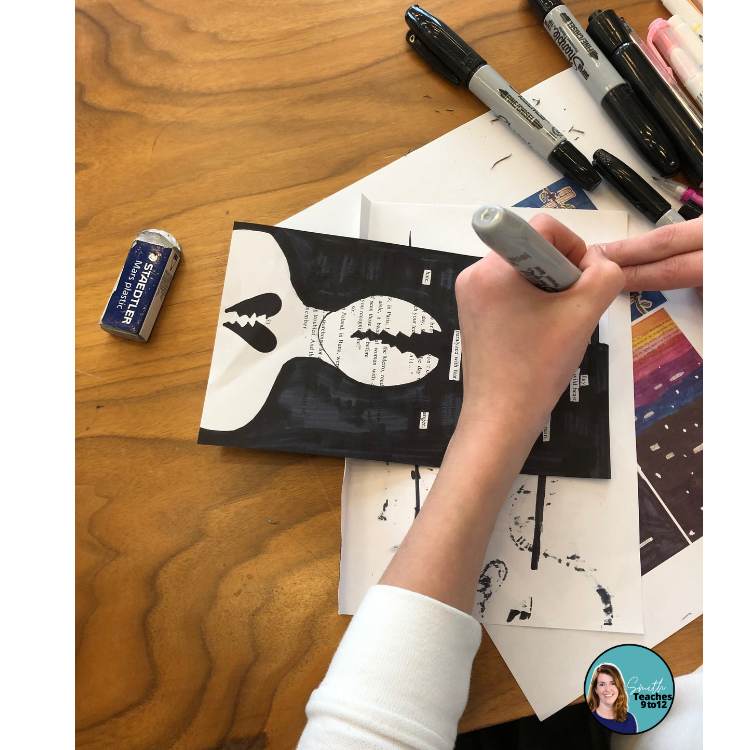
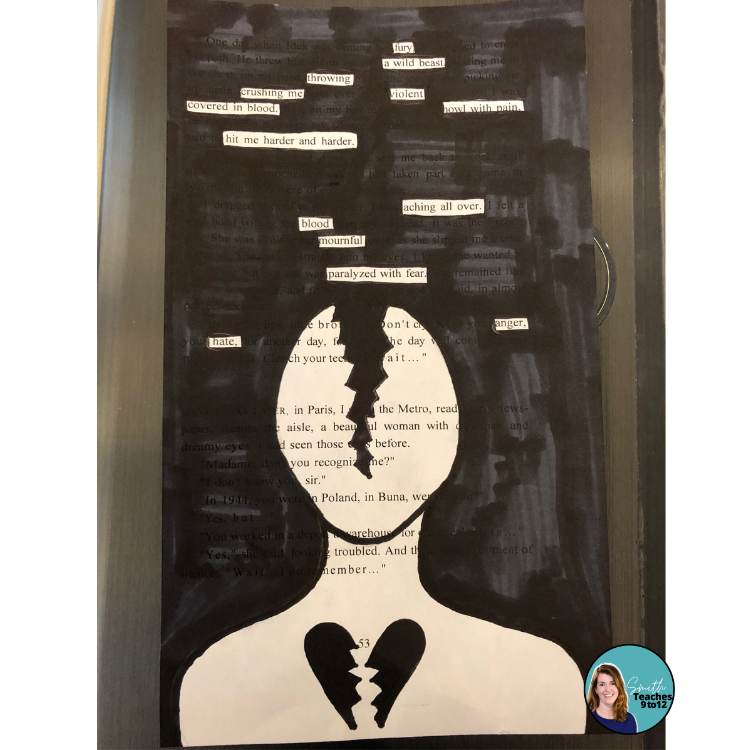
Another option is to make a copy of some pages from a short story or novel(s) you study in class. Perhaps it’s the use of a mentor text where you want to share an example of good writing. Perhaps it’s copies of the opening chapter of a book for First Chapter Fridays. Use what you have or what you want to have your students read a little more of but can’t find another way to include.
Then students read the text once to familiarize themselves. On a second round they go through with a black marker (or one of a different color) to scribble out the words they don’t want seen and leave untouched the words that will make up their poem.
Check out this ready-made Blackout Poetry activity with all instructions and some excerpts too.
Timing for the activities
And if you’re thinking when will I have time to do this in class consider setting aside the time you might use for silent sustained reading (SSR) one week or even when you would usually do for a First Chapter Friday. Instead of reading a chapter from a book, focus on the introduction to particular poet or group of poets.
For Black History Month in February that might mean highlighting the poets of the Harlem Renaissance – Langston Hughes, Gwendolynn Bennett, Countee Cullen, Claude McKay, and more.
For March and Women’s History Month it might mean a collection of classic and contemporary female poets – Sylvia Plath, Nikki Giovanni, Audre Lorde, Emily Dickinson, and more.
For May and Asian-American and Pacific Islanders Month it might be Basho, Adrienne Su, Chen Chen, Dorothy Chan, and more. Check out this post with 12 AAPI poets and poetry suggestions.
TEACHER TIP: Do any/all of these activities with your class in mid-March or right at the beginning of April and voila you have a student-created, easy-to-assemble bulletin board idea for National Poetry Month! And the display encourages others to enjoy poetry too!
Happy poetry “writing”!

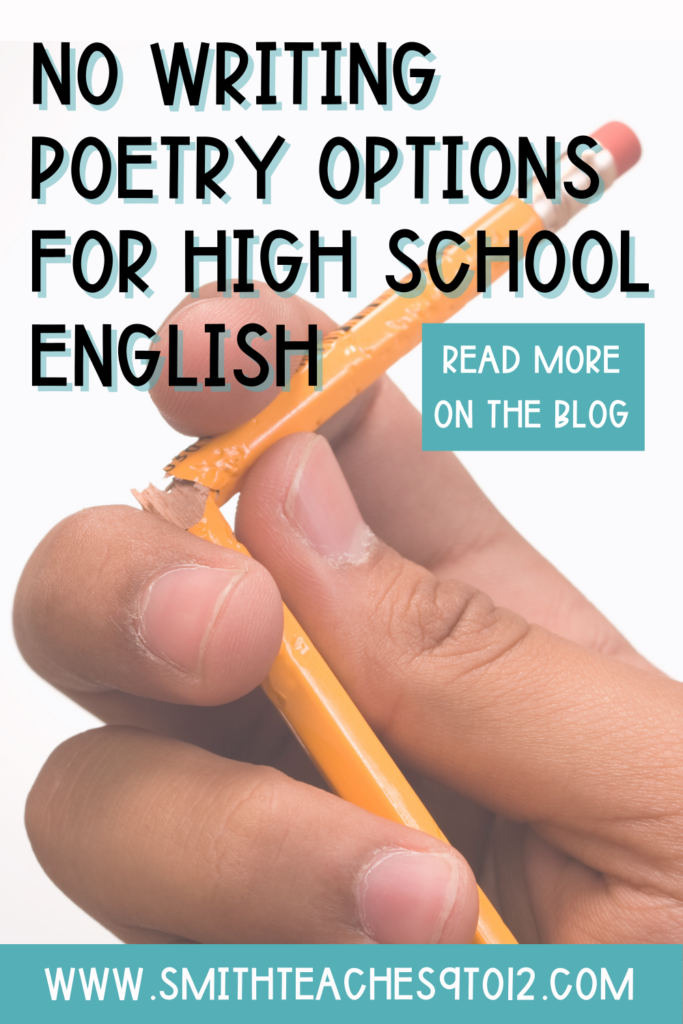
Related articles
- Adding Color to Your (Winter) Classroom Using Poetry
- Poetry Creation and Risk Taking in ELA
- 3 Ideas for Poetry Creation in Everyday ELA Lessons

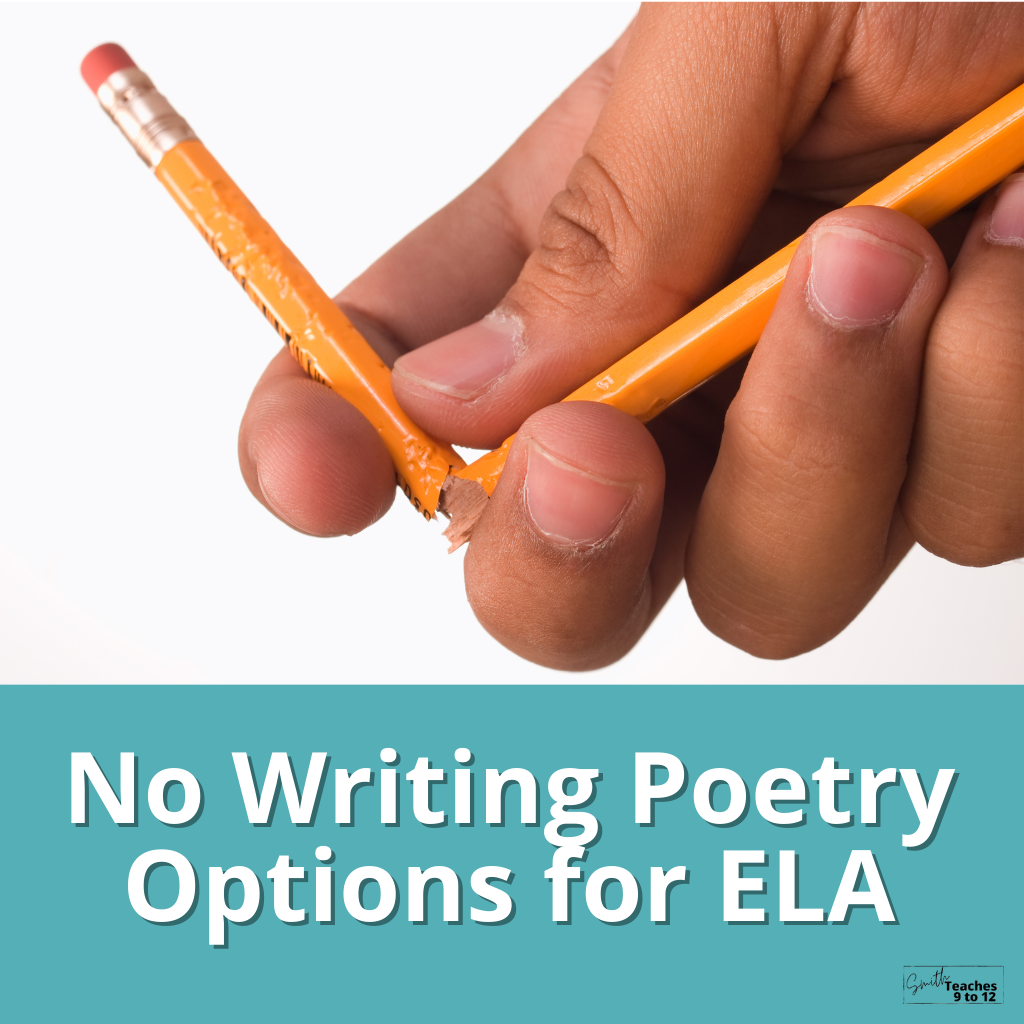
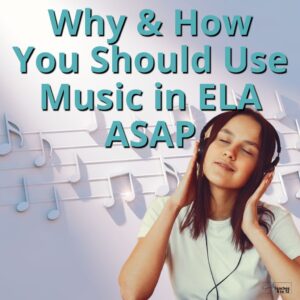
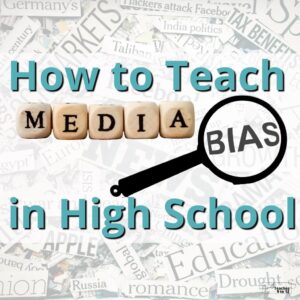
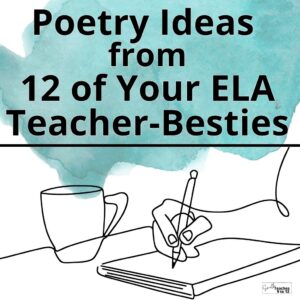
One Response